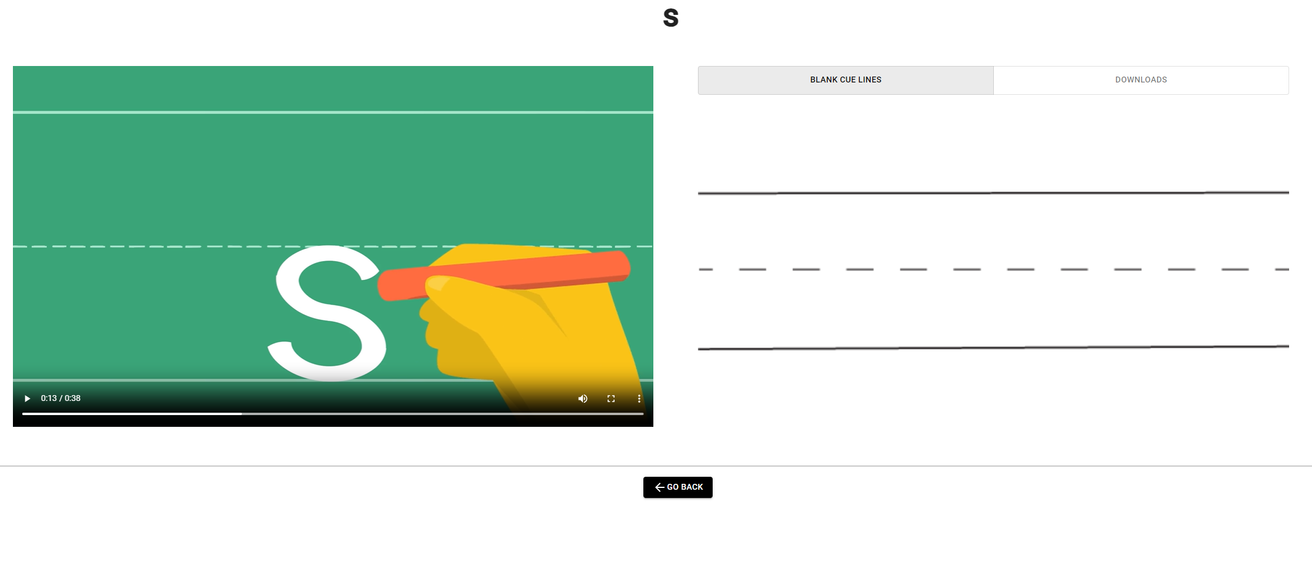A new handwriting instruction tool is available online for teachers and caregivers to access at no cost.
The Iowa Reading Research Center’s LIFTER (Letter Identification and Formation for Transcription and Early Reading) is an easy-to-use digital tool that helps children learn letters and improve their handwriting skills. The goal of LIFTER is to help educators strengthen their literacy instruction by explicitly connecting writing and reading.
“In my experience, students struggle with handwriting,” elementary teacher Allison Hippen says. “Some students' handwriting is not even legible, and students become so frustrated when they cannot reread what they wrote. The task brings so much frustration that I have seen students shut down reading and writing completely because it is too hard.”
Despite this difficulty, handwriting is an important skill. It not only helps students become better writers but also better readers. As a result of handwriting instruction, students learn letter shapes (graphemes) and the sounds they represent (phonemes)—two skills closely related to early reading. Research on handwriting shows that targeted handwriting instruction has led to increases in numerous reading skills, including letter recognition, grapheme-phoneme correspondence, and word reading.
“Handwriting is an often forgotten and misunderstood element of early literacy instruction,” says Dr. Shawn Datchuk, director of the Iowa Reading Research Center. “It deserves more attention, however, as the knowledge and skills related to handwriting underpin not only writing development but also reading.”
According to a national survey, elementary educators report two key challenges when teaching handwriting. Firstly, teachers receive limited to no preparation on how to effectively teach handwriting. Secondly, students receive limited to minimal instruction on handwriting.
These challenges inspired Datchuk and his colleague Dr. Derek Rodgers, assistant professor of special education, to create the Literacy LIFTER tool with support from Iowa Reading Research Center staff.
“When Dr. Rodgers and I work in schools, we often hear teachers say they need better ways to teach handwriting—specifically, a better understanding of what it entails and research-based materials to use,” says Datchuk.
For students, LIFTER has demonstrative videos that provide step-by-step instruction on correct letter formation. The tool also includes printable handouts for students to practice writing each letter. For educators, LIFTER includes an eLearning module that provides an overview of handwriting, reading and writing development, and evidence-based instructional practices to help educators deliver effective handwriting instruction.
The flexibility of LIFTER is another key component of this tool. Teachers can choose the order of letters to teach in alignment with their reading curriculum. This consistency helps reinforce the connections between reading and writing.
“This is a big deal," says Datchuk. "With LIFTER, teachers can select letters that match their early reading curriculum and explicitly connect writing to reading—the letter formation, name, and sound. Hopefully, we can move the national conversation on the role of writing within the ‘science of reading.’”
This tool is for educators to use in the classroom or for caregivers looking to complement their child’s learning. Paired with their regular reading instruction, LIFTER provides additional opportunities for children to practice letter writing, reinforcing their reading skills.
LIFTER and the accompanying eLearning module are available for free on the IRRC website.
“LIFTER would be incredible to have as a resource in the classroom,” Hippen adds. “This would put that piece of the puzzle in place for the student as they can see how writing connects to all the other parts of literacy.”
